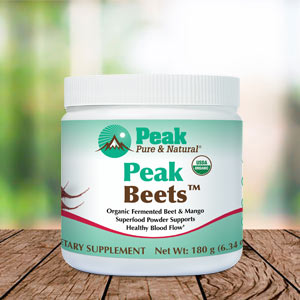Get Easy Health Digest™ in your inbox and don’t miss a thing when you subscribe today. Plus, get the free bonus report, Mother Nature’s Tips, Tricks and Remedies for Cholesterol, Blood Pressure & Blood Sugar as my way of saying welcome to the community!
The one thing about blood pressure that stacks stroke risk

Strokes are incredibly traumatic.
After all, one moment you feel fine. The next, you’re in a hospital having difficulty just trying to communicate with your family and likely facing long-term complications, including disability. And that’s if you’re one of the lucky ones to survive.
Yet, the truth is that while a stroke may seem to strike without warning, there are danger flares sent up by your body that can indicate one in your future.
High blood pressure and stroke go hand in hand.
In fact, a study by researchers at the University of Michigan has found that living with high blood pressure for the long term could be one of the most significant warning signs your stroke risk is off the charts…
Sustained high blood pressure and stroke risk
The study delved into the health data of more than 40,000 people, analyzing the cumulative effects of having high systolic blood pressure (the top number in a blood pressure reading) for years ahead of stroke.
They found that having a mean systolic blood pressure that is 10-mm Hg higher than average was associated with a 20% higher risk of overall stroke or ischemic stroke. And it elevated the risk of an intracerebral hemorrhage by a full 31%.
Those are two of the most common types of strokes. An ischemic stroke occurs when a clot cuts off the blood supply to the brain. An intracerebral hemorrhage is a bleed between the brain and the tissues that cover it.
These risks were even higher in black and Hispanic patients — with black patients having a 20% higher risk of ischemic stroke and a 67% higher risk of intracerebral hemorrhage than white patients.
Hispanic patients had a 281% higher risk of subarachnoid hemorrhage — a third type of stroke that happens when there is bleeding between the brain and the tissues that cover it.
The researchers concluded that “(The) results suggest that early diagnosis and sustained control of high blood pressure over the lifespan are critical to preventing stroke, ischemic stroke and intracerebral hemorrhage, especially in Black and Hispanic patients who are more likely to have uncontrolled hypertension than white patients.”
Reducing blood pressure to reduce stroke risk
The good news is that although long-term high blood pressure can send your stroke risk into the stratosphere, it’s a modifiable risk factor that puts you in the driver’s seat.
But this research shows that time is of the essence. If you’ve had high blood pressure for years, waste no time exploring your options to get it down.
High blood pressure is a serious condition treated by a physician, but several lifestyle factors can support healthier blood pressure numbers, including…
#1 – Exercising
Getting regular exercise is one of the best ways to reduce blood pressure, yet most of us don’t commit to it. But it’s important to remember that studies have shown that physical activity can be just as effective as most drugs at controlling blood pressure, so be sure to get back on the exercise bandwagon if your health allows it.
#2 – Reducing stress
The stress hormone cortisol has a powerful negative effect on your blood pressure. This makes lowering your stress levels vital to beating back blood pressure problems. Practicing mind over blood pressure and using relaxation techniques can help relax the smooth muscle in arteries to lower pressure.
#3 – Eating yogurt
The micronutrients contained in dairy foods include calcium, magnesium and potassium, all of which help to regulate blood pressure. But yogurt stands apart in that it also contains bacteria that promote the release of proteins that lower blood pressure. The Maine-Syracuse Longitudinal Study (MSLS) showed that eating yogurt may help lower blood pressure in older adults with hypertension by nearly 7 points.
#4 – Supplementing wisely
Certain supplements provide powerful blood pressure support. Pterostilbene (an antioxidant cousin to resveratrol) and grapeseed extract have shown to be particularly beneficial.
Editor’s note: What do you really know about stroke? The truth is, only 10% of stroke survivors recover almost completely, and all doctors can offer is what to do after a stroke occurs. That’s unacceptable considering 80% of strokes are preventable! Click here to discover how to escape The Stroke Syndrome: 5 Signs it’s Stalking You — Plus the Hidden Causes and Preventive Measures You’ve Never Heard About!
Sources:
Blood pressure high for years? Beware of stroke risk — EurekAlert!














